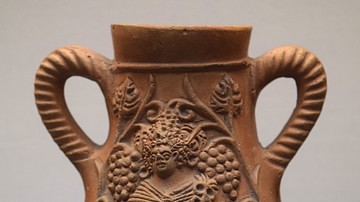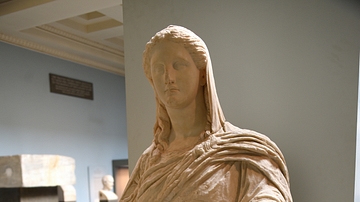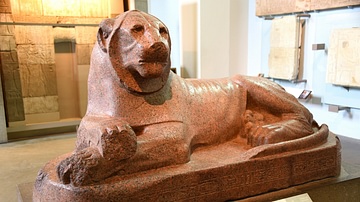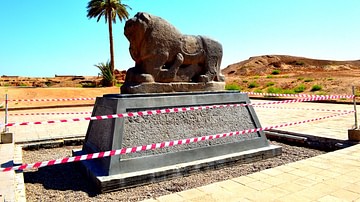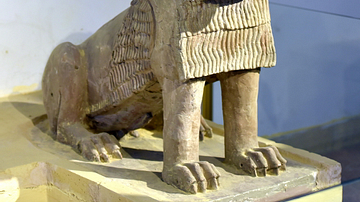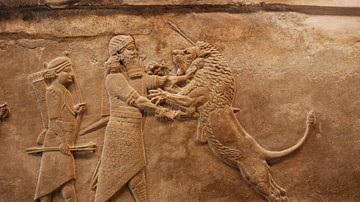Illustration
This colossal marble lion was found at a tomb within the ancient cemetery of Knidos (a coastal city in the south-west Turkey). The marble itself was brought from the Aegean Sea from mountain Pentelikon near the city of Athens. The lion's lower jaw and his fore-paws are missing. The lion's eyes (now empty) were once probably filled with a metal or a glass (to catch the light). It is unknown precisely to which period this lions dates back; it might well have been built 50 years or so after the Mausoleum at Halikarnassos (circa 370-350 years BCE). Other archaeologists believe that it dates back to the second century BCE. The British Museum, London.
Cite This Work
APA Style
Amin, O. S. M. (2016, March 21). The Lion of Knidos. World History Encyclopedia. Retrieved from https://www.worldhistory.org/image/4653/the-lion-of-knidos/
Chicago Style
Amin, Osama Shukir Muhammed. "The Lion of Knidos." World History Encyclopedia. Last modified March 21, 2016. https://www.worldhistory.org/image/4653/the-lion-of-knidos/.
MLA Style
Amin, Osama Shukir Muhammed. "The Lion of Knidos." World History Encyclopedia. World History Encyclopedia, 21 Mar 2016. Web. 19 Apr 2024.


